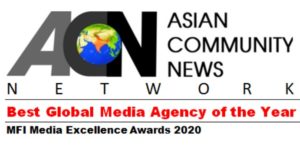Work From Home: The New Normal for Businesses – Emerging to Managing Risk, Key Challenges & Opportunities
Efficient Work from Home requires Governance, Process and Technology- an in-depth analysis and wayforward by Manish Kumar, Partner, Risk Advisory, Shinewing India.
The COVID-19 outbreak continues to have a devastating impact across the globe. The numbers of infected people increase every hour, and in many countries, movement restrictions are becoming tighter, health systems are struggling, and the stock markets have experienced their worst weeks since the 2008 financial crisis.

COVID-19 has also brought a huge health risk and has impacted economies across the globe. One of the key public health responses to the global coronavirus pandemic has been social distancing that is avoiding large groups of people in close quarters in order to inhibit the spread of COVID-19. Along with shutting down offices, a major tactic for social distancing has been encouraging or requiring people to work from home. We don’t yet know the full impact the pandemic might have on our working practices, keeping greater numbers of people out of the office, but it’s likely that once a new way of working has been established, it will be hard to go back to the old ways.
It is natural to see why the crisis might provide fertile ground for fraud. The combination of financial and health threats makes people more vulnerable and creates opportunities for fraudsters. In some countries, it has already been reported that criminal gangs have started to target deserted commercial premises to steal goods and stock.
New normal, Five mantras during COVID-19
Every Company’s need in the current pandemic is to assess how their employees might respond to the intense commercial pressure brought on by this unique economic situation.
Work from home with five objectives to achieve:
- Growth and revival to pre-COVID levels;
- Operational efficiency;
- Secured for self and keep company risk-free and protected;
- Properly engaged;
- Retain productivity.
On one side we see the above opportunities whereas on the other side the new normal may become the backdoor of increased fraud risk.
Key points in the new environment that increases the risk of fraud
- Re-engaging business partners (customers, suppliers, agents, intermediaries or other advisors)
- The risk of onboarding third parties that are not fully vetted and screened may result in newer risks.
- Working with new agents/intermediaries, due either to the closure of existing ones
- Pressure for new product/ services
- The new way of dealings
- Regulatory approvals
- Supply chain disruption
- Online banking
- Data and technology vulnerability
- The shift of resources (Man, Material & Machine)
- Business models are challenged
- Failed BCP (Business Continuity Plan) and DRP (Disaster Recovery
- Policies not compatible to cope up with pandemics/ Covid-19
- Staff replacements
- Performance management
- Productivity assessment
- Technology and capabilities
- Employees/ Contractors
- In the current situation, every company is looking for savings, and one of the immediate measures is to cut jobs or reduce payments to employees.
- Stressed scenarios trigger employees to commit fraud.
Opportunities in COVID-19
“While prior academic research has studied productivity effects of ‘working from home’ that gives workers temporal flexibility, ‘work from anywhere’ goes a step further and provides both temporal and geographic flexibility,” as quoted by Dr. Prithviraj Chowdhury from Harvard Business School. The values perceived are:
- Reduction of fixed administration and operation cost,
- Availability of skilled resource pool across geographical borders,
- Better productivity,
- Higher employee satisfaction,
- Opportunity cost efficiency of time saved besides commuting expense saving.
- Better and in fact larger availability of professional, focus work, higher and effective digital collaboration.
Challenges faced
The only challenge in work from home is how to ensure employee social connect, enable morale is maintained, work as delegated is performed, there is no loss of productive time of employee and the business target and objectives are met. This requires regular interaction, connect with all stakeholders digitally, and having governance, process, and technology so as to ensure all of the above including efficiency in business are measured and improved.
Work from home – what to focus on for a long-term strategy
There is a need to have customized productivity measurement strategies involving elements of monitoring employee progress regularly.
Following is a high-level approach for implementing Work from Home on a long-term basis:
- Identify and access the current state of work and requirement of physical presence in office:
- Conduct a discussion with various stakeholders to develop the current work from Office VS home capabilities
- Review current organization roles and responsibilities.
- Review various existing requirements of tools technology and platforms.
- Conduct assessments with interactions with various stakeholders to understand role and responsibility and detailed work measures.
- Understand key performance indicators to achieve the business objective.
- Define the target state for work from home program.
- Work with company stakeholders to define future state work from home program, risk and organization goal., Design a work from home strategy and road map and take inputs from various internal and external stakeholders.
- Develop a roadmap for implementation of work from home program.
- Design a future state conceptual architecture, SOP, API, tools, and technology to measure efficiency and meeting of organization goals.
- To in fact implement this there is a need for effective governance, process, and technology design and implementation.
- Following are some of the important elements w.r.t the same:
Governance
- Well defined organization strategy, long term, and a short plan
- Work for home risk management
- Designing well-defined Roles and Responsibilities and KPI
- Defining Policies and Standards of managing business
- Clear policy and standard for work from home
- Having well-defined Measurements and Reporting mechanism
Process
- Efficient processes for all business including ways of work management, in line with project management approach
- Detailed Activity level result-oriented Performance analysis.
- Regular check-in and corrective action response
Technology
- Designing and Implementing strong IT policy and processes to enable work from home
- Leveraging technologies like collaborative online meeting portal, web meeting, Email, Share drives, SharePoint, VPN enabled File shares.
- Enabling strong cybersecurity measures.
- Implementing and monitoring privacy controls.
- Use of auxiliary technology for effective work from home management.
Enable #WFH – business as usual, the new normal
Thus to enable effectively WFH, Companies need to have clear objective, strategies, they should be able to manage risk, have a clear Standard operating procedure, KPI measurement mechanism and an efficient reporting and monitoring mechanism, They should constantly measure and benchmark efficiency and cost-saving and thus make an effort to improve over the years. If done correctly, work from home can boost productivity and morale but if done badly, it can breed inefficiency, damage work relationships, and even demotivate employees.
What ShineWing India can offer to make the new normal possible #WFH
We offer professional services that prepare organizations to be ready for the future, who can adapt to #WFH as a strategy and permanent solution. From strategy to cost optimization, our range of services are as under:
- Preliminary assessment & review
- Mapping as is VS to be
- DOA (Delegation of Authority) review
- Revised BCP (Business Continuity Plan) / DRP (Disaster Recovery Plan)
- Review roles & responsibilities redefined
- Location & city identification
- Staff geography assessment
- Future strategy for hire and replacement
- A focused approach to Tier II/ III cities for cost optimization
- Roadmap making for #WFH
- #WFH protocols preparation, conduct during #WFH
- Revised Code of conduct policy
- Future architecture, SOP (Standard Operating Procedures), API (Application Processing Interface)I tools and technology to measure the efficiency
- Creating new normal Governance Framework
- Revisit Strategy – Long/ Mid/ Short term
- DOA
- Responsibility & KPI ( preparation
- Clear policy and standard for work from home
- Re-design SOPs and Processes
- Make policies that tweak WFH scenarios for hiring to retirement, procurement, bank management, sales, fixed assets, IT, Equity and other relevant areas.
- Identify & enable with right tools and technology
- IT Framework
- Data and password sharing
- Secured communication channel
- Cybersecurity measures
- Privacy controls
Our aim is to seize this situation as it comes and turn it into opportunities.
The entire world is hoping that this crisis will come to an end soon. We want to be known for how we sailed through the tough times and fought this long battle. It is about what we learn from this as we prepare for a better tomorrow.
About the author:
Manish Kumar is Partner, Risk Advisory, ShineWing India.ShineWing India is a global network of independent accounting and consulting firms and is ranked amongst the top 20 accounting networks in the world



